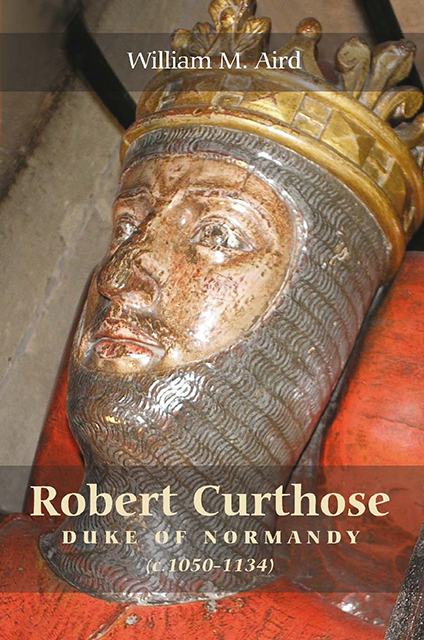Book contents
- Frontmatter
- Contents
- Dedication
- Acknowledgements
- Abbreviations
- Maps
- Genealogy: The Family Connections of Robert Curthose
- Introduction
- Chapter One Childhood
- Chapter Two The Dutiful Son
- Chapter Three The King's Son
- Chapter Four The Duke of Normandy, 1087–1096
- Chapter Five Miles Christi: The Soldier of Christ, 1095–1099
- Chapter Six The Returning Hero, 1100–1106
- Chapter Seven The Captive
- Epilogue
- Bibliography
- Index
Epilogue
Published online by Cambridge University Press: 03 March 2023
- Frontmatter
- Contents
- Dedication
- Acknowledgements
- Abbreviations
- Maps
- Genealogy: The Family Connections of Robert Curthose
- Introduction
- Chapter One Childhood
- Chapter Two The Dutiful Son
- Chapter Three The King's Son
- Chapter Four The Duke of Normandy, 1087–1096
- Chapter Five Miles Christi: The Soldier of Christ, 1095–1099
- Chapter Six The Returning Hero, 1100–1106
- Chapter Seven The Captive
- Epilogue
- Bibliography
- Index
Summary
At some time in the thirteenth century a painted wooden effigy of a recumbent knight wearing a coronet was made and presented to the abbey church at Gloucester. The effigy depicts the knight with his legs crossed and he appears to be in the act of drawing his sword. Since the fourteenth century at least, the effigy has been identified as representing Robert Curthose, duke of Normandy. From the time of Abbot Froucester (1381–1412), it was believed that Duke Robert was buried in the presbytery before the principal altar. Whether Robert's bones do indeed lie in front of Gloucester cathedral's high altar has not been substantiated through excavation and other evidence suggests that he might have been laid to rest in the chapter house.
By the time a drawing was made of the effigy in the late 1560s, it rested on a painted mortuary box. Around the box are shields depicting the heraldic arms of the Nine Worthies of the World, those of Godfrey of Bouillon and of England and France. The monument impressed visitors until the English Civil War in the seventeenth century, when Cromwell's soldiers broke up the effigy. The pieces were preserved and reassembled after the Restoration.
The effigy at Gloucester is impressive, but its elegant proportions bear no resemblance to the surviving written descriptions of Robert's physique. Both the major medieval sources for his life agree that he was short and stout, although not unpleasing to the eye. His stature was to blame for his nickname, but it could also be an advantage in battle. William of Malmesbury wrote of the Turkish general Corbaguath paying with his life for underestimating Robert's prowess by taking ‘his measure by his size alone’. Robert was difficult to dislodge from the saddle and his low centre of gravity gave him a distinct advantage as his own father found out to his cost at Gerberoy. He was also a fine archer as well as a consummate horseman. For Gaimar:
Under heaven there was no better lord.
He was duke of Normandy.
Over the Normans he had lordship
Much good and many deeds of valour,
Much marvellous service and much beautiful chivalry,
This duke of Normandy performed.
No-one seems to have doubted Robert's skills as a soldier, but medieval and modern commentators agree that, as a ruler, he was inept.
- Type
- Chapter
- Information
- Robert `Curthose', Duke of Normandy [c. 1050-1134] , pp. 282 - 286Publisher: Boydell & BrewerPrint publication year: 2011

